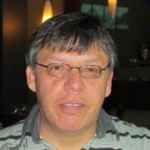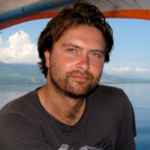The Kwiakah Nation is determined to protect the marine resources in its territory by using traditional knowledge and forging research partnerships.
Kwiakah Nation: Restoring Phillips Arm through Research and Indigenous Knowledge
Estimated Reading time

14 Mins
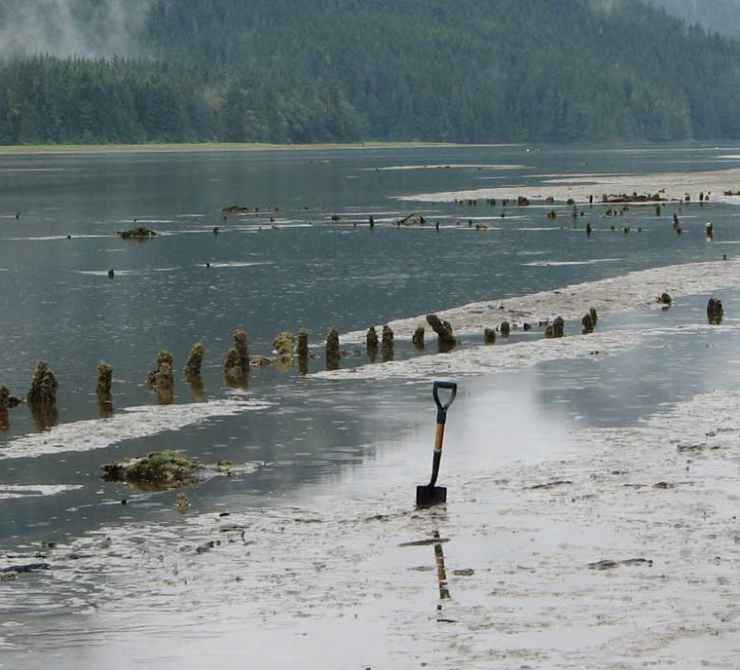
Phillips Arm
Phillips Arm contains unique lake, river, and estuary environments that are important for marine species such as salmon.
At a Glance
One of the smallest Nations in BC is having a big impact protecting the marine environment in their territory. Kwiakah Nation has only 22 members and is proactively working to restore and safeguard unique cultural and ecological features found in ᕈNacinuxᵂ Conservancy and the Phillips River watershed.
Since 2012, Kwiakah has led several projects to conduct aquatic assessments in its territory. This innovative research contributes to their understanding of how to protect key estuaries, lakes, and rivers that support important species in the area.
Working to Ground Truth Industry Impact
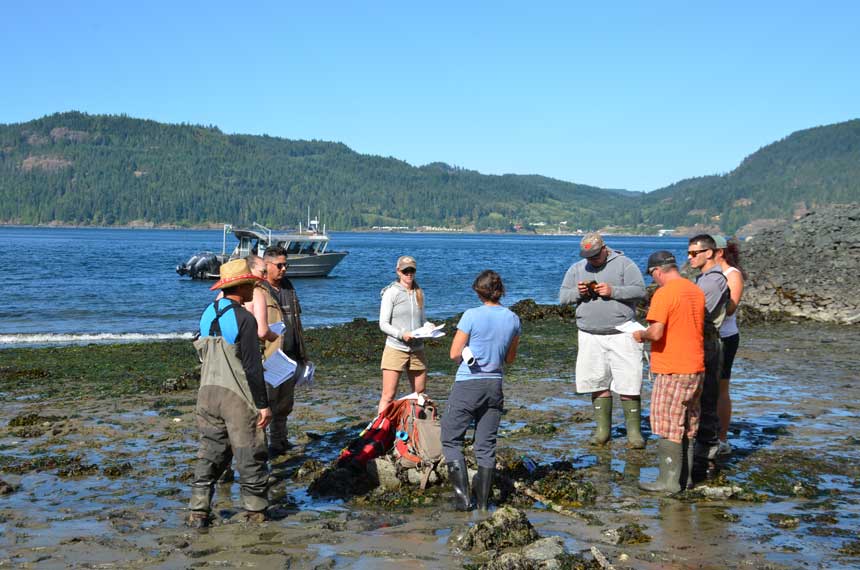
Kwiakah Nation’s territory is centered in Phillips Arm – a spectacular inlet in BC’s South Coast. At the head of Phillips Arm is ᕈNacinuxᵂ (Phillips Estuary) Conservancy, containing an ecologically rich lake, estuary, and river system.
These marine environments have a high level of biodiversity and wildlife including seals, herring, clams, bears, salmon, and many other species. They also contain important marine habitats such as eelgrass beds. These eelgrass beds support salmon populations, a vital resource that the Kwiakah Nation has depended on since time immemorial.
“These resources are so important to us,” explains Chief Steven Dick of Kwiakah Nation. “The entire area is incredibly significant to our Nation. However, in recent years we haven’t been able to access the area and keep track of what’s happening on the ground in the remote parts of our territory like we once were able to.”
The entire area is incredibly significant to our Nation. However, in recent years we haven’t been able to access the area and keep track of what’s happening on the ground in the remote parts of our territory like we once were able to.
Kwiakah members were originally based in their territory in Phillips and Frederick Arm, but eventually relocated to Vancouver Island due to inaccessibility of services. The Nation is actively trying to return to their traditional territory and village sites, and accessing and protecting their territory remains a huge priority for the small Nation.
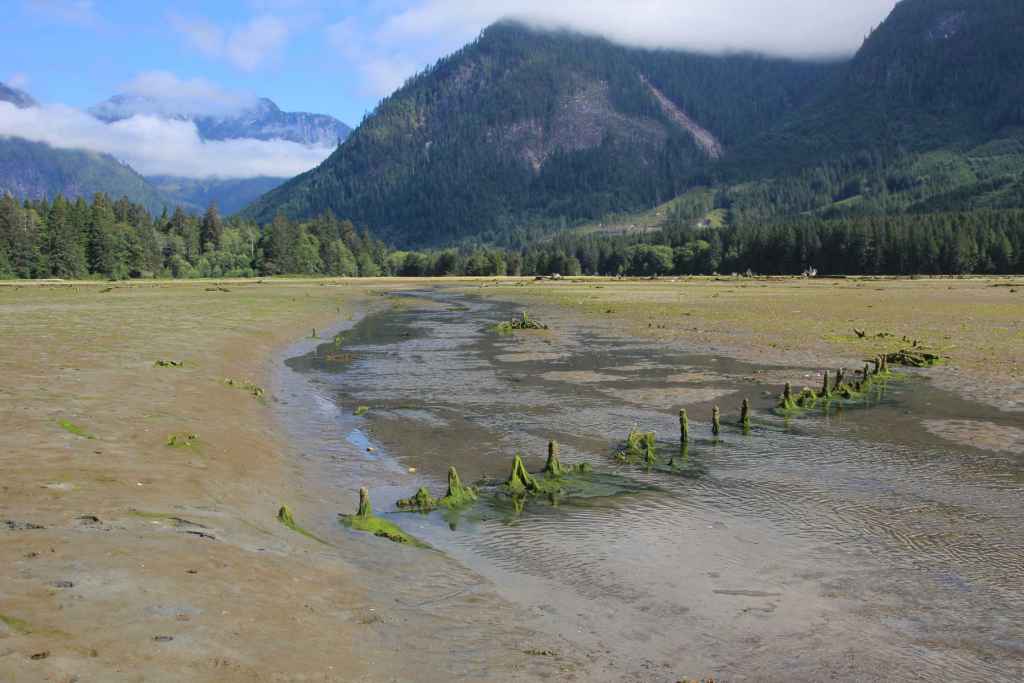
The remote location of ᕈNacinuxᵂ Conservancy makes visiting the conservancy a challenge, however, and Kwiakah members have been increasingly concerned about the effects of industry, climate change, and recreational activities on the sensitive marine ecology of the area.
For a solution, the Nation has embarked on research to measure the effects of industrial activities and climate change on the aquatic habitats in their territory. “We needed to have information to make decisions about what should be done in the area. So we invested in research projects to help us bridge the information gap,” says Chief Dick. “For example, we are concerned about how forestry may have affected the salmon population in our territory, so research projects are very important to us to gather information that we’ve been lacking for years.”
Bridging the Information Gap
“There has been quite a bit of industrial activity in Kwiakah territory, but no information measuring the abundance of species and how they have been affected by industrialization of the watershed,” explains Frank Voelker, Band Manager and Economic Development Officer. “We can’t make decisions about development without having that research — somebody has to be looking out for the environment or it gets pushed aside.”
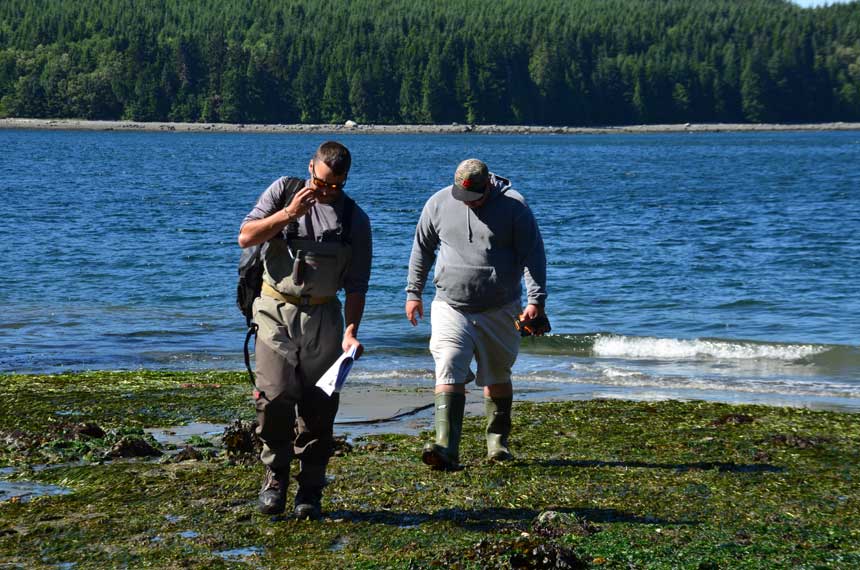
In order to protect the important marine resources in their territory and advocate for sustainable development, the Nation has forged partnerships with universities and research groups to conduct aquatic assessments. This has included an estuary and watershed research project that led to clam and eelgrass surveys of the area.
“The first project we did together with Kwiakah was an aquatic resource assessment,” explains Morgan Hocking, Senior Fisheries Biologist at Ecofish Research Ltd. (Ecofish). “It was a kickoff project to overview the status of salmon, eelgrass, clams and crabs in Phillips Arm and the potential impacts of industrial forestry to those resources.”
By comparing the assessment to traditional use studies of the area, the research suggested that the eelgrass beds had been significantly depleted. “Our understanding from the traditional use study was that this area used to have significant eelgrass patches, and we didn’t find those in the assessment,” explains Hocking. This led to a follow up study on eelgrass and clam health, population size, and biodiversity. “This research helps to establish baseline data to measure potential impacts from industry,” says Hocking. “It was also a great opportunity to integrate knowledge from community members and train First Nation technicians during data collection.”
It was also a great opportunity to integrate knowledge from community members and train First Nation technicians during data collection.
Establishing resource baselines will help the Nation manage resource development in its territory by informing decision making. This will ensure the unique aquatic environments of ᕈNacinuxᵂ Conservancy can be protected for the Kwiakah Nation and ecological integrity of the area. “We want to make sure that development in this area is balanced,” says Voelker. “We need to make sure it’s not just industry, the Kwiakah Nation, and government benefiting — the environment needs to be a beneficiary too.”
In another spinoff project from the original assessment, Ecofish has been supporting the Kwiakah to understand potential impacts of historical logging to salmon populations by analyzing long term records of forest harvest in the Phillips watershed in concert with long term records of salmon populations. “This is a really novel analysis—nothing like it has been done before,” explains Hocking. “By comparing the productivity of chum and pink salmon populations at Phillips River to other runs in the Great Bear Rainforest that have not experienced logging history such as the Kvai River, we are able to provide much more clear recommendations to the Kwiakah regarding historic forest harvest relationships to salmon.”
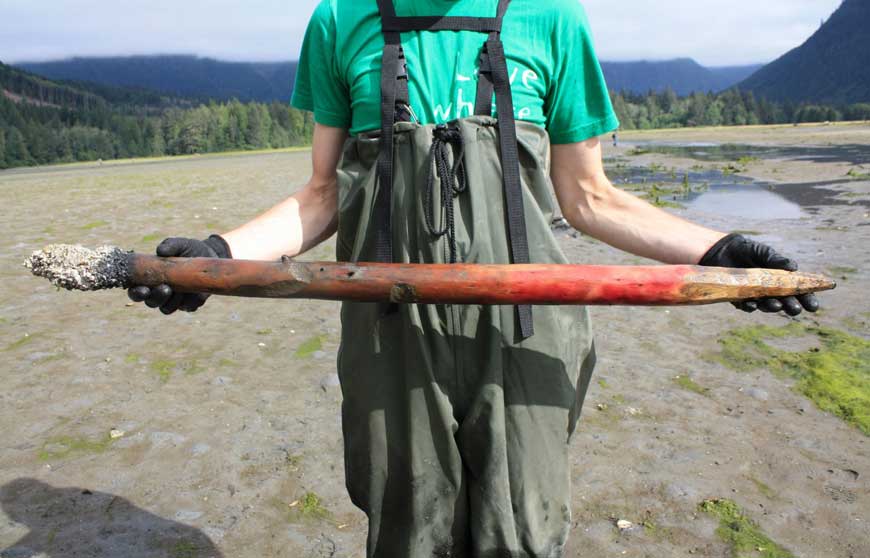
The aquatic assessments and baseline surveys will help ensure the Nation has the resources and information they need to make decisions regarding resource management in their territory. “It’s really important that we have these baseline surveys so we can know what’s happening moving forward,” confirms Voelker. “It will help us engage with industry and plan for the territory effectively.”
Strategically Forging Partnerships
For the small Nation, conducting stewardship work with its limited resources is a unique challenge. “We don’t receive as much funding because we are such a small Nation in terms of population size,” says Chief Steven Dick. “But we still have a fairly large territory to protect, and we will always find a way to do that.”
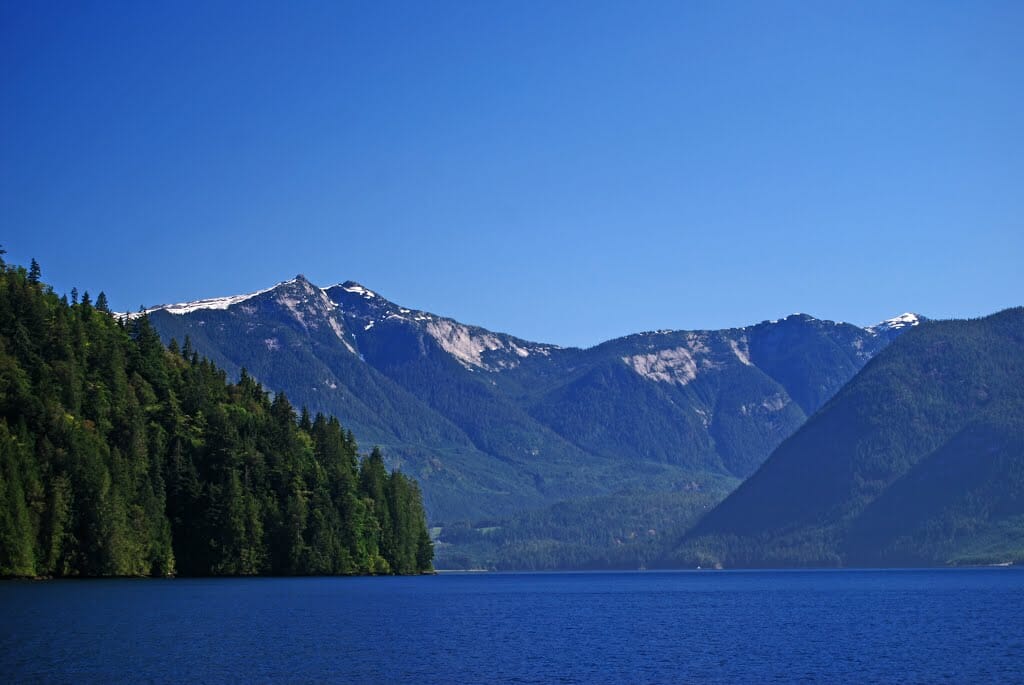
As a result, Kwiakah Nation has forged strategic partnerships to maximize their stewardship efforts. “We’ve made a great deal of effort to partner with other groups for our programs, because we just don’t have the capacity to do that in-house,” explains Chief Steven Dick. “We need to work together with other groups to be able to do certain types of projects. We have been quite eager and progressive in creating these types of connections and partnerships to get stewardship work done.”
We have been quite eager and progressive in creating these types of connections and partnerships to get stewardship work done.
Partnering with Ecofish is one example of these rewarding partnerships. “We’re a scientific professionals looking at available information in a non-biased way,” explains Morgan Hocking. “We provide the best advice and information possible to the Nation so they can support their decision making—that’s our role. We are here to support Kwiakah Nation and help find them the information and present it in a scientifically defensible fashion.”
To support a successful collaborative research partnership between science researchers and a First Nation, Hocking recommends spending time with the community to build a strong relationship before even beginning the research.
“One of the first things we did in this project is go up to Campbell River and meet with Steven and Frank and other community members to understand why this project was important to them,” explains Hocking. “You need to get those personal connections and stories about the area. It’s critical to understand the local concerns and scientific priorities that need to be addressed.”
You need to get those personal connections and stories about the area. It’s critical to understand the local concerns and scientific priorities that need to be addressed.
The investment in relationship building helps create a successful partnership for both parties. “Kwiakah has been a pleasure to work with—they’re supportive of our data-driven approach,” says Hocking. “Overall, our partnership has the potential to inform how ecosystem-based management is implemented in important fisheries watersheds such as the Phillips River.”
Key Challenges and Successes
Establish Baselines as Soon as Possible
“I would recommend doing the assessment research as soon as possible,” explains Voelker. “Establishing the baselines is really important to determine any changes in species and their environments when considering development work.”
It’s also important to ensure research results are of the highest standard. “When the Nation is building this data set that previously did not exist for an area, it puts them in a very strong position to focus research on the most sensitive and valued resources,” explains Hocking. “It’s very useful and important for resource management.”
The Small Nation Advantage
While small Nations like Kwiakah may face capacity and funding challenges for stewardship work, their size also provides unique advantages. With only 22 members, consensus can be reached quickly and the level of member engagement in the Nation’s projects is high. “We are able to meet really regularly, and bring forward Council’s suggestions to the membership and get their blessing,” explains Chief Steven Dick. “It can be a huge challenge for larger Nations to organize those opportunities for feedback. We are lucky to have a really efficient and streamlined bureaucracy. We can consult with our membership directly and that means everyone is on board with our stewardship work.”
Kwiakah’s small size also means that they have been able to maintain their traditional hereditary leadership structure. This allows for a consistent and long term vision for the Nation’s future. “Our governance system is hereditary, so we are not making decisions on a three or four year election cycle,” explains Chief Steven Dick. “There’s a consistency there in terms of the direction we want to take in regards to our territory—which is actually a huge advantage. For larger Nations, projects can get shelved for personal or political reasons because of election turnover. That’s something we don’t have. When we take on project we will follow it through until it’s completed.”
Environmental Outcomes
Research projects have enabled Kwiakah Nation to propose environmental mitigation measures to preserve the ecological integrity of the area that have been negotiated and agreed on by forestry stakeholders. This includes limiting yearlong forestry harvesting license to once every five years rather than annually, which reduces the frequency of the negative impacts of logging. The four year buffer period between harvests allows wildlife such as bears to experience their habitat with less industrial human contact. The Nation has also negotiated terms to reduce the actual timber harvest levels below the Annual Allowable Cut and give wider buffers to designated streams.
These projects have also produced research on species abundance for salmon (chinook, coho, chum, pink and sockeye species), eelgrass meadows, dungeness crabs, and bivalves. Baseline inventories were established for eelgrass and bivalve resources. Recommendations on future management for these species were produced as part of the research projects.
Learn more about regulation.
Cultural Outcomes
These projects support the Kwiakah First Nation’s access to traditional foods by providing recommendations to support the health of important species, such as salmon and clams. This information helps the Nation determine how to balance development with conditions to sustain important cultural resources.
Ecofish worked closely with Kwiakah anthropologists to compile historic fish harvesting records. The work increases the community’s cultural connection to the territory and knowledge of traditional uses.
Learn more about traditional foods.
Economic Outcomes
Kwiakah Nation has led aquatic assessments to determine the health and abundance of resources in their territory. This enables the Nation to make informed decisions about resource development in their territory, especially with regards to future industry partners and the provincial and federal governments.
Kwiakah Nation has also utilized support from Coast Funds’ to complete a road repair on a route that was washed out by a mudslide. This repair ensured the Nation was able to access remote areas of their territory in order to conduct salmon enhancement activities in the most cost-effective way possible, saving thousands of dollars in annual operating costs for their research.
Learn more about infrastructure.
Social Outcomes
These project have increased the Kwiakah Nation’s awareness and engagement of their resources, and created additional interest in future research projects.
Contacts
Between 2012 – 2015 Coast Conservation Endowment Foundation Fund approved three projects totalling $61,374 towards this project.
Online Resources
- Kwiakah First Nation Marine Use Plan
Kwiakah First Nation, October 2014 - Kwiakah First Nation Marine Use Planning
Member Profile, Nanwakolas Council
Published On July 25, 2016 | Edited On April 29, 2022
